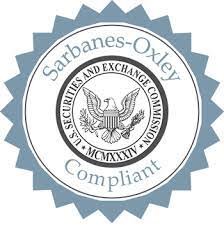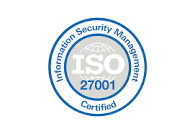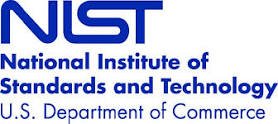User Access Review (UAR): The Definitive Guide to Automation & Compliance
What is a User Access Review?
In today’s complex digital landscape, ensuring that employees have the correct level of access to your company’s systems and data is a critical and non-negotiable task. This process, known as a User Access Review (UAR), is a fundamental pillar of security and compliance. It involves a periodic evaluation of access rights granted to individuals for computing systems and networks, identifying users with access permissions, checking their activity, and verifying that their access rights are appropriately authorized. This review covers all parties with privileged access, including employees, third parties, and contractors, with the goal of preventing accidental or intentional misuse of rights.
But if you’re like most organizations, you’re still relying on manual, spreadsheet-based reviews that are time-consuming, error-prone, and a tremendous burden on your IT and compliance teams. This isn’t just inefficient; it’s a significant security risk. Neglecting UARs can lead to undetected malicious activities from compromised access rights.
This guide will walk you through the essential components of an effective User Access Review, and show you how automation can transform this dreaded process from a manual chore into a powerful driver of security and audit readiness.
Access Auditor can automate your user access reviews in as fast as 2 weeks!
The Manual User Access Review Burden: Why Spreadsheets Are Failing You
Many companies create a user access review checklist for the IT security team to follow. Teams review user access rights and privileges to ensure that they are appropriate and aligned with the organization’s policies and procedures. The review also involves identifying any potential risks related to unauthorized access to information systems.
Why Do We Perform User Access Reviews?
We perform user access reviews to ensure that users have appropriate access to computer systems, applications, and data resources. These reviews help us identify any access rights that may no longer be necessary or may pose a security risk to the organization. By regularly reviewing user access, we can mitigate the risk of inappropriate access and protect sensitive data. From an IT governance perspective, user access/entitlement reviews provide benefits to the business in several ways:
We perform user access reviews to ensure that users have appropriate access to computer systems, applications, and data resources. These reviews help us identify any access rights that may no longer be necessary or may pose a security risk to the organization. By regularly reviewing user access, we can mitigate the risk of inappropriate access and protect sensitive data. From an IT governance perspective, user access/entitlement reviews can help in several areas:
The traditional approach to User Access Reviews is a drain on resources and a ticking time bomb for your security posture. As organizations grow, managing access becomes increasingly difficult. The challenges are clear:
- Time-Consuming & Resource-Intensive: Collecting data, normalizing it into spreadsheets, chasing down managers for sign-offs, and documenting the results can consume hundreds of hours of staff time every quarter, diverting critical IT resources from strategic projects.
- Highly Prone to Human Error: Manual data entry and reconciliation are fertile ground for mistakes. A single error can lead to a user retaining unnecessary access, creating a security vulnerability that could be missed during an audit.
- Incomplete Audit Trails: Generating an accurate, consistent, and defensible audit report from a sea of email chains and disorganized spreadsheets is nearly impossible. This can lead to costly fines and reputational damage.
- The Problem of Privilege Creep: Occurs when users retain access to sensitive data they no longer need, often after changing roles or responsibilities. Without a systematic review process, users accumulate permissions over time, gaining access to systems and data they no longer need for their current roles. Access reviews help identify and revoke these unneeded or unused roles and authorizations, which is a major security weakness and a prime target for malicious actors.
- Excessive Privileges: Addresses instances where users are granted more access than necessary for one-time transactions, which is often not revoked afterward. UARs enable the revocation of these unnecessary privileges, reducing overprovisioning.
- Access Abuse and Errors: Explains how access to sensitive data can lead to breaches, abuse, or unauthorized changes, especially in financial transactions. Reviews ensure access is granted only when required, mitigating misuse.
- Insider Threats: UARs help enforce the principle of least privilege, reducing data exposure and limiting the impact of breaches from disgruntled employees or compromised accounts.
The User Access Review Process: A Best-Practice Checklist
A comprehensive and defensible UAR process is built on a few core principles. When done correctly, it is a strategic exercise that strengthens your organization’s security posture.
- Establish a Clear Access Management Policy: Define a formal User Access Review policy that outlines which systems and data should be reviewed, the frequency of reviews (e.g., quarterly, annually), and who is responsible for certifying access. A comprehensive policy should include:
- Asset Inventory: A list of all assets users can access (applications, databases, systems, networks, physical infrastructure).
- Asset Owners: Identification of owners for each asset (administrator, manager, IT team), who provide details about asset content.
- User Roles and Access Levels: Detailed descriptions of roles and responsibilities, including specific access levels (e.g., read-level access).
- Report Types and Frequency: Specification of audit and UAR types, occurring on a set schedule or in response to triggers.
- Centralize All Access Data: Before a review begins, you must have a complete, accurate, and up-to-date view of who has access to what, across all of your applications, databases, and network resources. This involves examining access to sensitive systems to identify who has access.
- Conduct the Review and Certification: Generate and send reports to asset owners for review and assessment of necessary access changes. Assign managers and system owners the responsibility of reviewing and certifying access for their teams. This step is crucial for verifying that permissions align with the principle of least privilege. For large numbers of employees, reviewers may grant/deny access to entire groups/departments, notifying managers for comments.
- Remediate and Adjust Access: Once the review is complete, take immediate action to revoke any outdated or unnecessary permissions. This is where you actively close security gaps identified during the review. Implement decided changes by modifying permissions and verifying updates with asset owners.
- Generate a Complete Audit Trail: Document every step of the process. This includes the initial review, the certification decisions, and all remediation actions. This documentation is your key to proving compliance during an audit. Create a new UAR report and confirm accurate implementation with asset owners. Evaluate security and access policies, documenting and communicating issues (e.g., decreased productivity, security concerns) to asset owners for continuous improvement.
Types of User Access Reviews
UARs can be conducted in different ways, each serving distinct objectives:
- The Periodic User Access Review: This is a key step for access rights compliance and effective information system management. It involves mapping access rights within a specific scope and linking each employee’s responsibilities to their access permissions. The frequency is determined by the sensitivity of the access rights. This type of review is typically scheduled and conducted at regular intervals (e.g., quarterly, annually).
- The Continuous User Access Review: This approach focuses on minimizing access rights risk by constantly monitoring organizational changes. It operates on an ongoing basis, without a set timeframe, and prioritizes analysis of access rights risks. This includes monitoring employee arrival/departure, job changes, new permissions, security incidents, and unusual access to detect potential breaches.
These two strategies are complementary, with periodic reviews ensuring compliance and continuous reviews providing real-time risk minimization.
Compliance Mandates: Meeting Regulatory Requirements with User Access Reviews





Regular user access reviews aren’t just a good idea—they’re a requirement for many security and privacy standards. By automating your UAR process, you can easily demonstrate compliance with key frameworks. UARs can be a regulatory requirement depending on location and business type, and even if not mandated, many security and compliance guidelines recommend annual reviews.
- SOX (Sarbanes-Oxley Act): A US law for public accounting organizations, it mandates assessment and reporting on internal controls for financial reporting. UARs are essential for maintaining strict
access controls over financial reporting systems and data, requiring enforcement of access control procedures, including UARs for digital records. They help prevent fraud and unauthorized changes to financial records. Organizations must comply with SOX during annual audits by independent auditors. - HIPAA (Health Insurance Portability and Accountability Act): For healthcare organizations, HIPAA 164.308 (Administrative Safeguards) requires periodic review of access policies and procedures for US healthcare companies. UARs are a core component of the Security Rule, ensuring that access to Protected Health Information (PHI) is limited to only those with a legitimate need.
- PCI DSS (Payment Card Industry Data Security Standard): Mandates granular access control, least privilege, and periodic reviews of user roles and rights (Requirement 7), along with an annual review of access control policies (Requirement 12). This ensures that only authorized personnel can access sensitive payment information.
- GDPR (General Data Protection Regulation): Article 32 requires organizations handling personal data of EU residents to audit data processing and access, including employees and third-party vendors, with significant fines for non-compliance.
- NIST (National Institute of Standards and Technology): NIST Special Publication 800-53 (controls AC-1 and AC-2) requires periodic review of access rights and policies, allowing organizations to set their own schedules.
- ISO 27001: This international standard for information security management systems (ISMS) requires robust identity governance and regular user access reviews as a foundational control to protect all sensitive corporate assets.
User Access Review Best Practices
Establishing an efficient and effective UAR process requires adherence to several best practices:
- Keep Your Access Management Policy Updated: Regularly update the policy as the organization evolves to ensure appropriate access levels. Document changes in protected data, user roles, and access control procedures.
- Get All Key Stakeholders Involved: Managers, leaders, and supervisors are better suited than IT teams to determine user access rights, as they understand employee responsibilities. Their involvement is crucial for accurate and timely certifications.
- Enforce Role-Based Access Controls (RBAC) And Least Privilege:
- RBAC: Streamlines UAR by organizing users into roles with specific access privileges, simplifying management and ensuring consistency. This allows for certifications by roles and exceptions, improving the accuracy and relevance of reviews by focusing on a manageable number of roles instead of hundreds of individual privileges.
- Principle of Least Privilege: Users should only have access to data they need, when needed, minimizing UAR time and maximizing security. New users should be granted minimum access rights.
- Educate Staff About UARs: Involving employees and managers in the review process can speed it up and educate them on cybersecurity importance. Sending access rights lists to both users and managers for input is recommended.
From Burden to Benefit: The Power of an Automated Solution
An automated platform for user access reviews completely eliminates the pains of manual processes and unlocks powerful benefits for your organization. It transforms what is often a protracted and demanding compliance obligation into a “non-event”.
- Drastically Reduced Time & Cost: An automated solution can slash the time spent on reviews by up to 90%, freeing up valuable resources to focus on strategic security initiatives.
- Enhanced Security Posture: By providing a clear, centralized view of access and automating the review workflow, you can proactively identify and eliminate security risks like privilege creep, excessive privileges, and dormant accounts.
- Effortless Audit Readiness: Generate a complete, defensible audit report with the click of a button. An automated system provides a clean, documented trail of all review activities, with all evidence of identity access review compliance saved permanently in one central location.
- Continuous Compliance & Peace of Mind: Move beyond fire drills and reactive compliance. An automated platform enables you to embed UARs into your continuous security and compliance programs, continuously monitoring for changes in sensitive roles or privileges and generating immediate alerts for any unauthorized modifications.
Your Solution: The Access Auditor Difference
Access Auditor is an intelligent, automated platform built to eliminate the pain of manual user access reviews. Our solution centralizes all of your user and access data, streamlines the review process, and generates audit-ready reports without the need for a single spreadsheet.
Key features that make Access Auditor the fast, easy, and powerful choice include:
- Automated User Access Reviews: Automates the entire UAR lifecycle, from discovery and review to reporting and alerting, providing an easy-to-use web-based solution for access certification.
- Access Intelligence: Leverages a sophisticated machine learning algorithm to discover and highlight risks and anomalies associated with users and their access rights, helping reviewers pinpoint risky permissions.
- Fuzzy ID™: Our patented name-matching algorithm uniquely identifies and links users from disparate systems, even without a common login ID, creating a single, unified repository of all access data across your enterprise.
- Identity Warehouse: Builds a comprehensive identity warehouse by integrating data from both cloud and on-premise applications, providing a “single pane of glass” view into who has access to what.
- Powerful Governance Features: Includes robust capabilities like real-time alerting on changes, rigorous enforcement of Separation of Duties (SOD) policies across applications to prevent fraud, and the ability to discover terminated users.
- Evidence of Compliance: All evidence of identity access review compliance is permanently saved in one secure location, greatly simplifying and expediting instant audits and compliance reporting.
- Role-Based Access Reviews and Provisioning: Incorporates sophisticated role-mining capabilities, enabling certifications by roles and exceptions, significantly improving the accuracy and relevance of reviews.
- Flexible Workflow Engine: Features a rules-based workflow engine that empowers managers and business owners to efficiently approve or deny user rights and initiate necessary remediation actions.
- Manage Cloud Access Rights: Seamlessly combines access rights for both in-house (on-premise) and cloud applications within a single product, providing one unified identity data warehouse for all users and applications.
Ready to Transform Your User Access Review Process?
Don’t let manual user access reviews be a source of stress and risk any longer. Discover how Access Auditor can help you achieve continuous compliance and a stronger security posture. Security Compliance Corp has nearly two decades of experience delivering access review automation.
User access review efforts should be simple and efficient. For more information on SCC and Access Auditor, please contact us here. We look forward to helping you gain control over your user access rights and automate the extremely labor-intensive task of user entitlement reviews.
